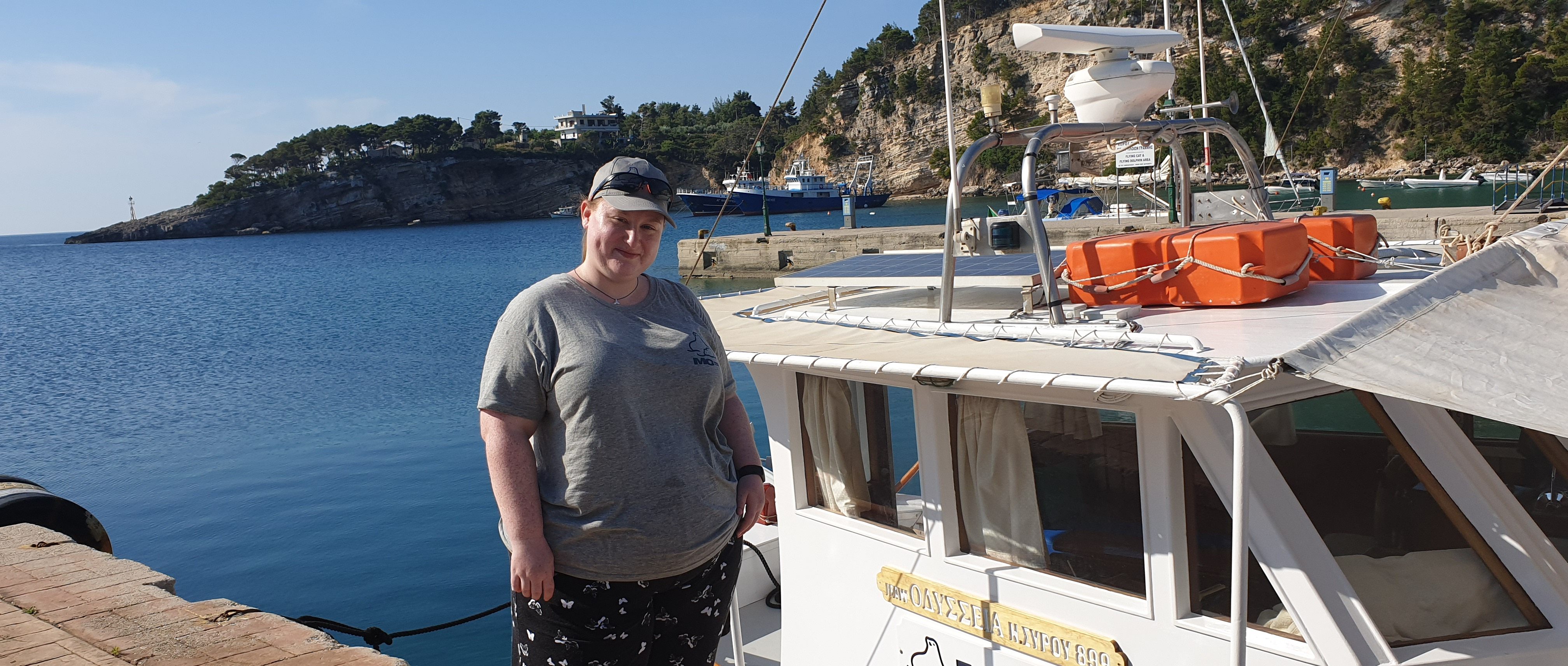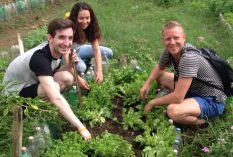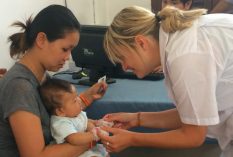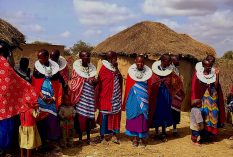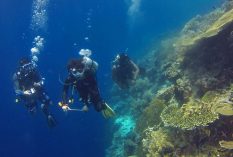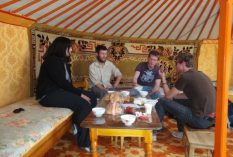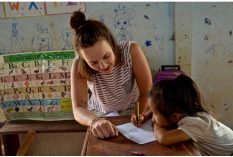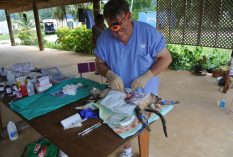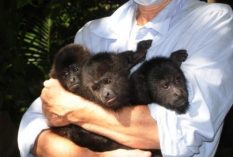This project was an amazing experience for me. Within the first 4 out of days research days, there were 5 sightings of groups of Bottlenose (Tursiops truncatus) and Common (Delphinus delphis) dolphins, which are both classified as Least Concern by the IUCN. There were no sightings on the 5th day, which had very little “on effort” (searching) time as the sea state was above 3 for the majority of the journey according to the Beaufort Sea States. A sea state of 3 or above makes it difficult to sea dolphin behaviour due to the waves and therefore once the sea state reaches 3 or above, the research team go “off effort” (not searching). If any dolphins are sighted during the “off effort” period, they are photographed for identification purposes but not recorded.
These sightings were unusual as 3 of the sightings consisted of mixed groups of both bottlenose and common dolphins, when bottlenose dolphins do not usually interact with common dolphins in a positive manner. This is because the common dolphins are smaller and more playful, whereas bottlenose dolphins are larger animals and are seen to socialise less than common dolphins. This is a phenomenon which is only seen here in the Mediterranean, therefore the photo identification and behaviour recordings were crucial for these sightings. It is theorized by Kimon, and an Italian Scientist he’s working with Berte, who is the top Cetologist, that this behaviour is to create a mutually beneficial feeding strategy. This theory is based on the knowledge that the Mediterranean is oligotrophic as there are very few nutrients, which provides the Mediterranean its clear deep blue colour. An example of this was seen on Day 1, there was a sighting of 6 D. delphis and 1 T. truncatus. The 6 common dolphins bow riding and socialising and the bottlenose dolphin being with the others, but a little further back on its own.
Another particularly unusual sighting, was on day 2, where there was a single bottlenose dolphin found with a single common dolphin. This was particularly unusual at common dolphins (D. delphis) are a social species and are usually found in a pod, or at the least, males are found in pairs. Where as bottlenose dolphins are regularly found alone as they are a larger delphinid, and are stronger and more confident that they can defend themselves. The common dolphin did come to investigate the boat and bow ride for a couple of minutes, but then left us alone. Following this the 2 dolphins swam further away from each other and began to dive. This suggests that the Bottlenose was feeding and the Common may have been copying the Bottlenose and also feeding. Around 30 minutes later there was another sighting, this time it was 2 Bottlenoses which were diving for about 1.5 minutes in a feeding pattern, where they dove, then resurfaced to breathe and dove again. These dolphins did not interact with the boat.
After returning from the boat in the afternoon, we had a siesta and the Kimon would come over to the apartment and provide a lecture. These lectures would impart his knowledge on the resident species and the life of a dolphin field researcher. Kimon then showed me how he does his Photo Identification on the computer. He loads them up and step 1 is to delete any images that doesn’t contain a dolphin, step 2 is the go through all of the images and discard any which doesn’t show any information on the dolphins either by the image being taken at the wrong angle to be able to get any information from the dorsal fin, or the fin is obstructed by the water and splashes, or the image not showing any information on the dorsal fin by it being too blurry when you zoom in to see the dorsal fin. Kimon saves time by completing step 1 and step 2 simultaneously. Step 3 is to then match the dorsal fin marks, shape and colour against the catalogue he has accumulated to be able to match which dolphins are residents and have been seen previously, and which are new. This is completed by getting one individuals best file photo on one side of the screen, and again going through all of the images from the days photos on the other side of the screen, renaming and cropping todays images to represent the individual that they match. I picked this up quickly, and was able to identify a number of individuals from the pictures which Kimon took during the day, including one which Kimon had not yet named. All of the individuals in Kimons research area, have a number and a many also have a name, based on the damage on their fin, which makes them easy to identify during stages 1 and 2. One individual I had to identify, Kimon believed was one individual, but when I matched it with the images in the file for each individual, I matched it up to a different individual, which Kimon then checked and agreed with me. This individual wasn’t named, so Kimon told to choose a name for it, which I chose Dynati, which is the Greek word for strong in relation to a female, as this individual was.
Today we encountered a group of 4 Bottlenose dolphins with 1 common dolphin during a Sea State of 1. Barbara noticed the group at a far distance and I noticed that this group included 1 common dolphin. This was a great encounter to experience as these dolphins were diving for up to a maximum of 2 minutes 40 seconds, including the common dolphin. This shows that although common dolphins feed in the surface waters, they are also capable of feeding at a depth. There are two wonders when you think about this situation. It is amazing that the bottlenose, which are usually a more aggressive species of dolphin and “don’t play well with others” allowed the single common dolphin to join them. There are many theories regarding why a bottlenose dolphin would join a group of common dolphins, such as to increase the pod size for defence, or to be able to fish more efficiently, by a larger pod being able to collect and control a larger ball of fish. Although there aren’t many ideas on why a common dolphin would be beneficial to a pod of bottlenose dolphins as they prefer smaller pods and are more aggressive than common dolphins. This was also the first day where we saw dolphins, while “on effort” and I was able to complete the behavioural data collection sheet, while Kimon took the photos for the identification on the evening. I began by shouting out the sections, and Kimon would tell me the answer, and then as I got more confident I was able to tell him what I thought the answer was and he confirmed I was correct and stated that I was a great help.
I am also proud of my personal success of being able to overcome my back pain and weight for the week with a lot of exercise and working on a boat. We also went to visit the monastery on Kira Panagia, which is up a mountain, and I’m very happy with myself for being able to walk up the mountain. It was a very big personal achievement for me.
This project is amazing and I would highly recommend this.
Dolphin Research Internship in Greece

